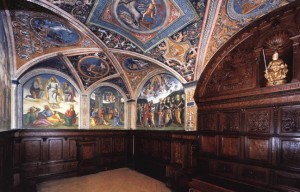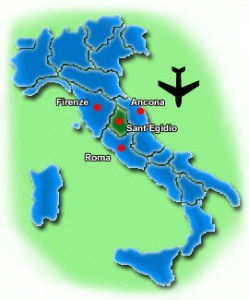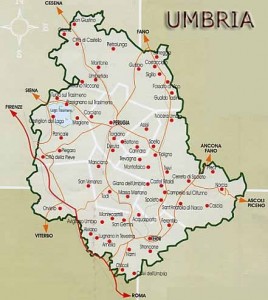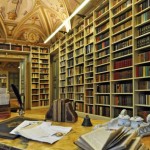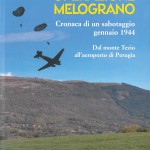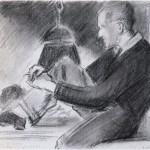Perugia is an Italian medieval hill town, known also as a lively students town (home to the International University for Foreigners, the University of Perugia, the Music Conservatory of Perugia as well as other recognised academic institutions).
Perugia is home to many of Italian finest Opera singers, like Antonietta Stella, Anita Cerquetti, Mario Sereni, Carmen Gonzales, Mario Petri, Marina Comprato and Paolo Coni, who worked closely with Pavarotti. The town also hosts renowned music festivals like Umbria Jazz and the Sagra Musicale Umbra, attracting world-famous musicians and enthusiastic fans and making Perugia, in the heart of Italy, literally beat!
The city is also known for cultural events: the main draw in the summer is Umbria Jazz, Italy’s foremost jazz event.
Its rich artistic and cultural patrimony and the natural environment make Perugia a unique city of major importance, since its origins.
In Perugia one can sample good wines and many of the traditional Umbrian foods associated with festivals celebrating or religious festivities.
History of Perugia
The hills of Perugia were inhabited since prehistoric times, being first a settlement of the Umbrians, then the Etruscans, becoming one of the most important cities in the High Tiber Valley in the VI century.
Conquered by the Romans in 319 B.C. Perugia was deeply involved in the civil war between Antonio and Ottaviano.
After the fall of the Roman Empire Perugia was destroyed again by Totila in 547, then it belonged to the Byzantine dominions, and finally it became a powerful independent city-state allied to the Papal State when in the IX century, with the consent of Charles the Great and Louis the Pious, it passed under the Pope.
However, for many centuries the city continued to maintain an independent life, warring against many of the neighbouring lands and cities, like Foligno, Assisi, Spoleto, Todi, Siena, and Arezzo.
Beside, the city legacy was linked to the Guelphs.
The XIV century was characterised by violent struggles, between the Nobles and the Populars, and by the war against the Pope rule which ended with the Peace of Bologna in 1370, when Perugia was forced to recognise the Papal authority.
In the XV century the power of the city was concentrated in the Baglioni family but in 1540 Perugia was placed again under the direct control of the Papal State.
The Papal rule continued, excepted during the French occupation and the Roman Republic, until the formation of the Kingdom of Italy in 1861.
Some things to see in Perugia
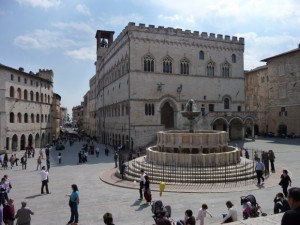 Piazza IV Novembre and the Fontana Maggiore
Piazza IV Novembre and the Fontana Maggiore
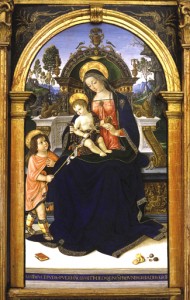 “Pala di Santa Maria dei Fossi” by Pintoricchio (a detail) Preserved inside the “Galleria Nazionale dell’Umbria” (the most various and important art collection of the Region)
“Pala di Santa Maria dei Fossi” by Pintoricchio (a detail) Preserved inside the “Galleria Nazionale dell’Umbria” (the most various and important art collection of the Region)
How to reach Perugia
By Airplane – The nearest airport is the Regional International Airport “San Francesco d’Assisi” – it’s 15 km from Perugia and connected to the center of the city (Piazza Italia; Perugia Rail Station) by shuttle buses that leave after each flight arrival; the cost of this service is about 3,50€.
The airport has a free park and inside there are several car rental companies stands.
This Airport is connected to: Milan Malpensa, Trapani, London Stansted, Bruxelles Charleroi, Tirana. For more information see http://www.airport.umbria.it/public/
Alternatively, you can fly to Roma Fiumicino at the International Airport “Leonardo da Vinci” situated at 210 km from Perugia. There are daily coach connections between Fiumicino and Perugia, the cost of the ticket is 21€ for only one trip, 34€ for round trip and it can be purchased on board. For timetables see http://www.sulga.it/index.php.
Another possibility to reach Perugia from Fiumicino International Airport is by train. There are many shuttle trains (Leonardo Express) from Fiumicino station to Roma Termini, which depart from the airport every half an hour. The cost of the ticket is 14€. From Roma Termini station you can take a direct train to Perugia. http://www.trenitalia.com/
Other airports in central Italy are: Ciampino International Airport (Rome-CPA), at 150 km from Perugia; Florence Airport “Amerigo Vespucci” (Loc. Peretola, Florence-FLR), at 160 km; Ancona Airport, at 90 km.
By Train – The main city station is Perugia Fontivegge.
Coming from the North, on the Firenze-Roma line, change train at Terontola Station and take a train for Perugia.
Coming from the South, on the main line Roma-Ancona, change train in Foligno.
Information on times and prices to reach Perugia train station are available checking http://www.trenitalia.com/
By Bus – Perugia it’s connected by means of daily buses to Firenze, Roma, Napoli, MilanoRoma “Leonardo Da Vinci” Airport.
By Car – Coming from the North take the Motorway A1 “del Sole” (Milan-Naples) – exit Valdichiana Bettolle and take the road SS75bis that enters Umbria coming from the Trasimeno Lake area and continues towards Perugia.
Coming from the South, take Motorway A1 “del Sole” (Milan-Naples) – exit Orte connected to Perugia through the road SS204 (direction Terni), then take the road E45 (or SS3bis).
If you take the Motorway A14 “Adriatica” (Bologna-Taranto) on the East Coast – coming form the North, exit Cesena and through the road E45 reach Città di Castello, then Perugia; coming from the South, exit “Civitanova Marche”, take the road E77 and follow Foligno direction before and Perugia direction after.

